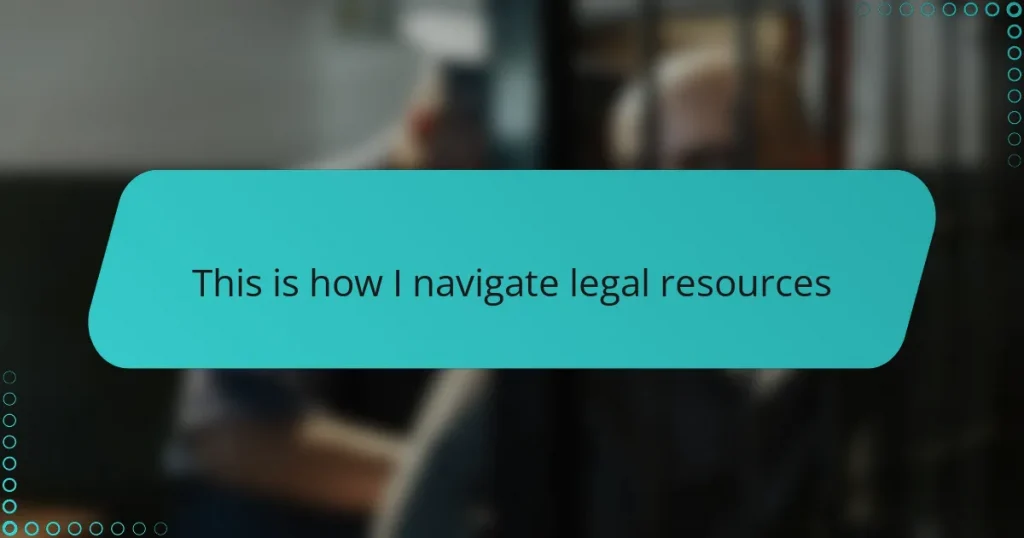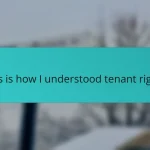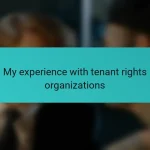Key takeaways
- Legal advocacy emphasizes core principles like fairness, justice, and empathy to empower individuals facing legal challenges.
- Identifying diverse legal resources, including community clinics and educational workshops, is crucial for effective advocacy.
- Building strong communication with legal professionals enhances understanding and fosters a collaborative approach.
- Adapting legal resources to specific needs and overcoming emotional hurdles are vital for successful navigation of legal systems.
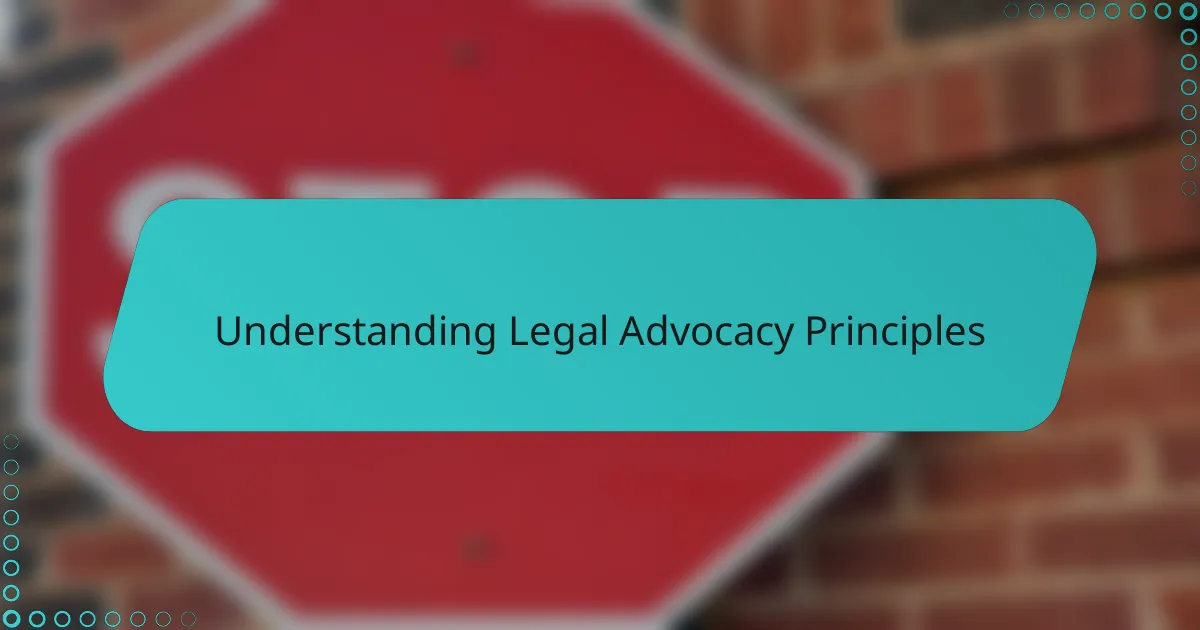
Understanding legal advocacy principles
Legal advocacy is about more than just understanding the law; it’s about knowing how to use it to support and empower others. I’ve found that grasping its core principles—such as fairness, justice, and respect—is essential before diving into any case. Have you ever felt overwhelmed by legal jargon? That’s why these principles act as a compass, guiding us through complex systems without losing sight of human dignity.
From my experience, one of the most powerful aspects of legal advocacy is its commitment to equity. This means standing up for those whose voices are often unheard, which can be both challenging and deeply rewarding. I remember feeling a real sense of purpose when I first realized that advocacy isn’t just about winning cases but about creating real change for people’s lives.
At its heart, legal advocacy is about connection—linking individuals to the resources and knowledge they need while navigating a system that might seem intimidating. It makes me ask: How can I make this process less daunting for someone facing legal challenges? Understanding these principles has shaped the way I approach every interaction, reinforcing that empathy and clarity are just as important as legal expertise.
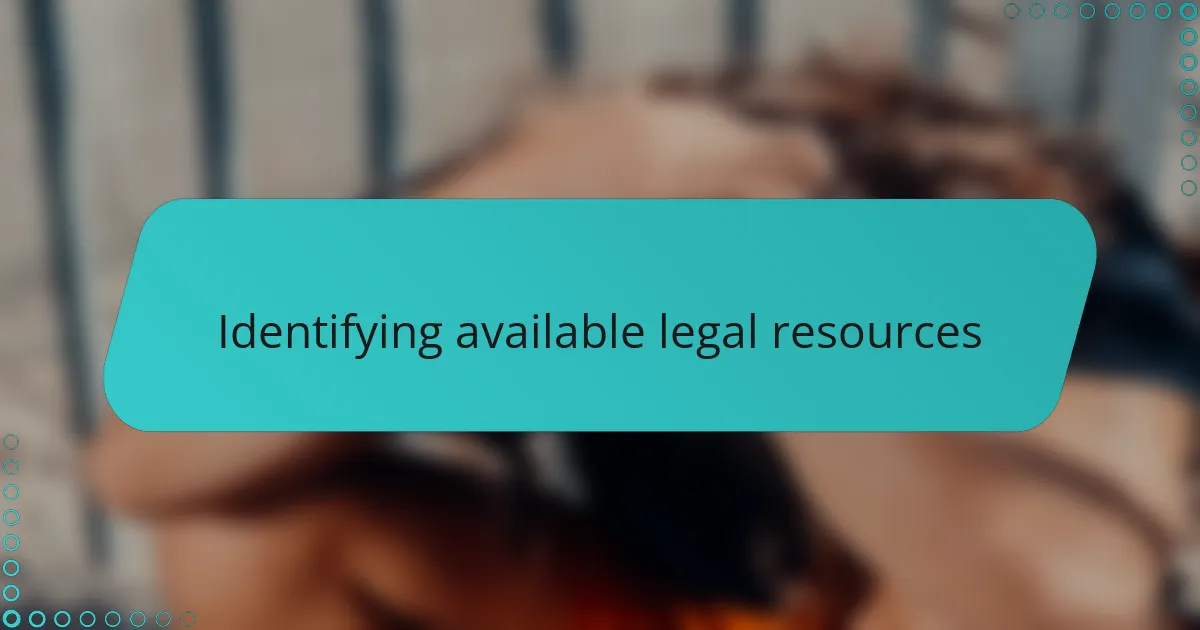
Identifying available legal resources
Knowing where to find legal resources can feel like searching for a needle in a haystack, especially when you’re new to advocacy work. I remember the first time I needed assistance—I was unsure whether to turn to state-run programs, nonprofit organizations, or online databases. It was only after asking the right questions and doing some digging that I realized how varied and accessible these resources really are.
Have you ever wondered why some people hesitate to seek legal help? Often, it’s because they’re unaware of the free or low-cost support available to them. From my perspective, community legal clinics, pro bono services, and even local bar association referrals are invaluable starting points that many overlook. Recognizing these options early on helped me guide others more confidently and efficiently.
One thing I always remind myself—and others—is that legal resources come in many forms beyond just lawyers. Educational workshops, self-help guides, and support groups have been game changers in my advocacy journey. When I tap into these, I see firsthand how empowering it is for people to feel informed and supported every step of the way.
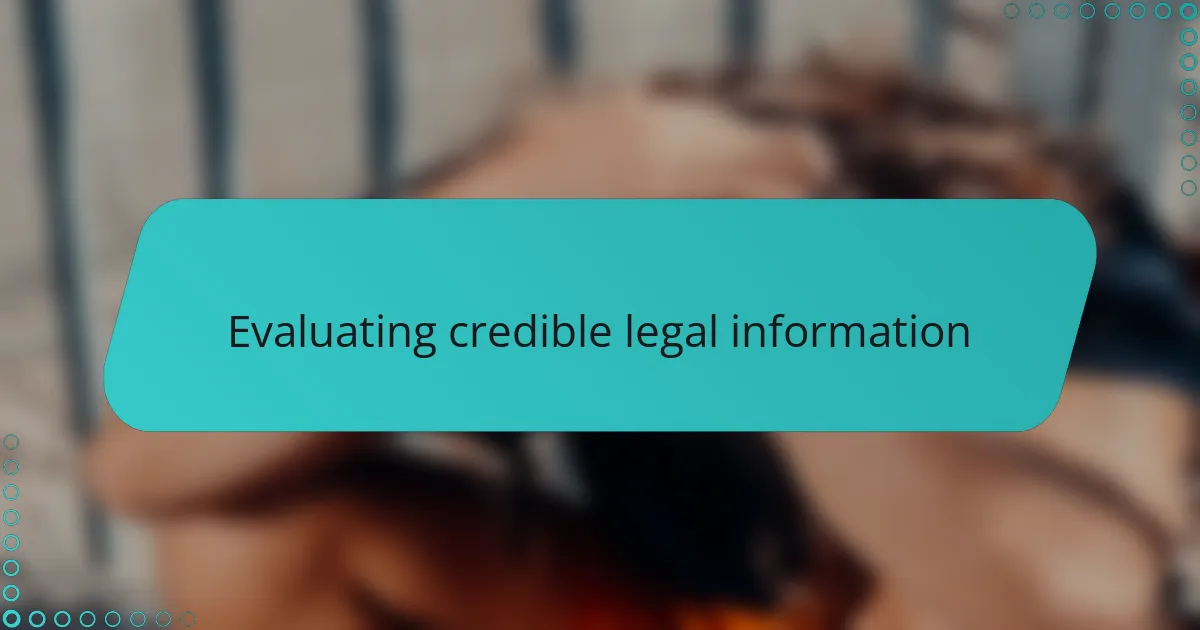
Evaluating credible legal information
When I first started navigating legal information, I quickly learned that not all sources are created equal. Have you ever found yourself unsure if a website or article is trustworthy? I’ve made the mistake of relying on outdated or biased information, and it only complicated things. That’s when I began prioritizing resources from established institutions—like government sites or reputable legal aid organizations—because their credibility is backed by expertise and accountability.
Evaluating the accuracy of legal information often means checking the date and author. Laws change, sometimes rapidly, and I’ve encountered advice sitting on pages for years without updates. It can be frustrating, but I ask myself: Does this source cite current statutes or case law? Learning to look for those signs has saved me from giving or following advice that might no longer apply.
I’ve also found that cross-referencing multiple sources helps build confidence in what I’m reading. When different credible sites or professionals agree, I feel more secure in the information’s reliability. Sometimes, I even reach out directly to legal advocates or attend workshops to clarify anything that seems unclear. This kind of proactive verification has become a habit I couldn’t recommend enough.
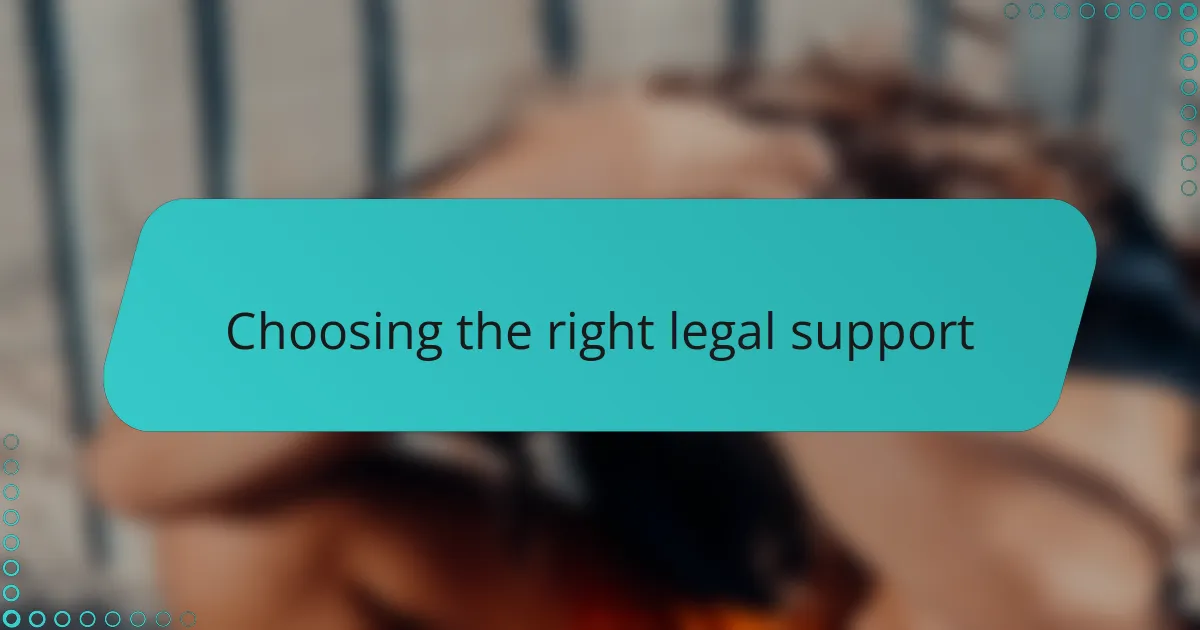
Choosing the right legal support
Choosing the right legal support often starts with asking yourself what kind of help you really need. From my experience, some situations call for specialized attorneys, while others can be addressed through legal aid clinics or advocacy groups that offer tailored assistance without the hefty price tag. Have you ever struggled to pinpoint which option fits your unique circumstance? It’s a question I’ve faced countless times, and finding that fit makes all the difference in feeling confident going forward.
I recall a moment when I recommended a community advocate to someone hesitant about hiring a lawyer. The relief in their voice when they realized support didn’t always have to mean expensive legal battles stuck with me. It’s essential to consider not just credentials but accessibility, empathy, and commitment because the right support feels like more than just representation—it feels like partnership.
Sometimes, choosing legal support means being proactive about vetting credentials and experience. I ask myself: Does this person or organization have a track record with cases like mine? Checking reviews, asking for referrals, or simply having an upfront conversation about goals and expectations can reveal whether the fit feels right. That approach helped me avoid mismatches and ensured I always had a team who genuinely understood the challenge at hand.
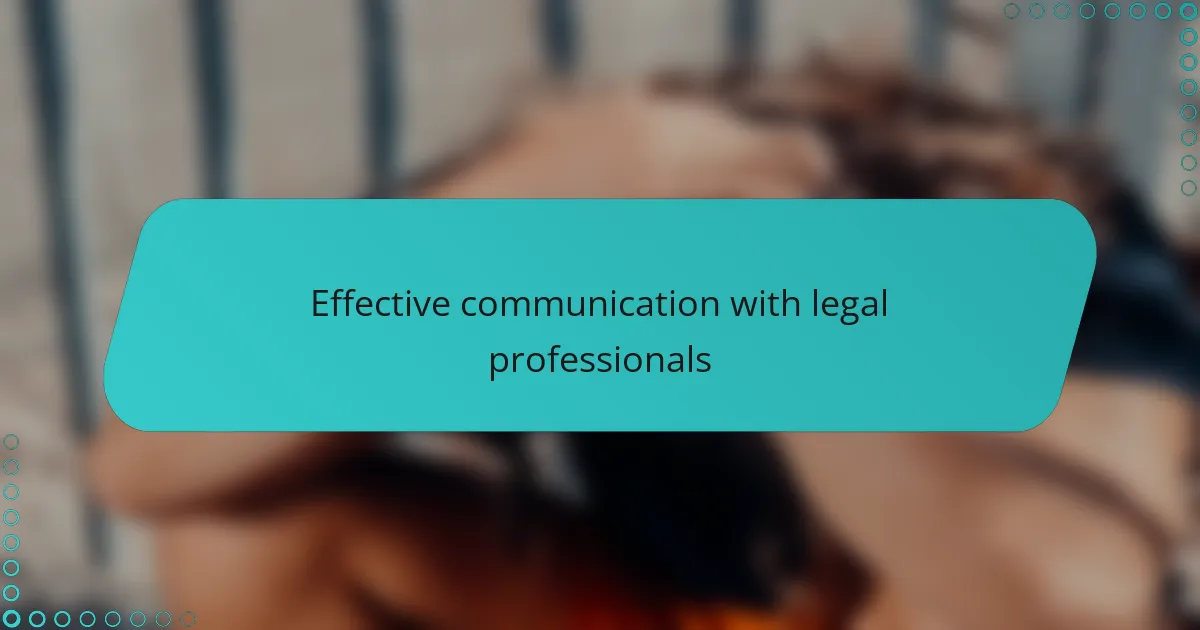
Effective communication with legal professionals
Communicating effectively with legal professionals can feel intimidating at first—I remember being cautious about using the right terms and not wanting to appear uninformed. But what I’ve learned is that being honest about what you understand and where you need clarity creates the best dialogue. Have you ever hesitated to ask a question because it felt too basic? I’ve been there, and I’ve realized that clarity over complexity always works better.
Listening actively during conversations with lawyers has also made a huge difference in how I navigate legal matters. Instead of trying to absorb everything at once, I focus on key points and ask for examples that help me grasp the bigger picture. When I do this, I find that legal professionals appreciate my effort to understand, which opens up a more collaborative atmosphere.
Finally, setting clear expectations about communication—like how often and in what way updates will be shared—has saved me from unnecessary frustration. I once worked with an attorney who was great but hard to reach, and learning to address this upfront changed everything. Don’t hesitate to voice your preferred communication style; it not only helps you stay informed but also builds trust along the way.
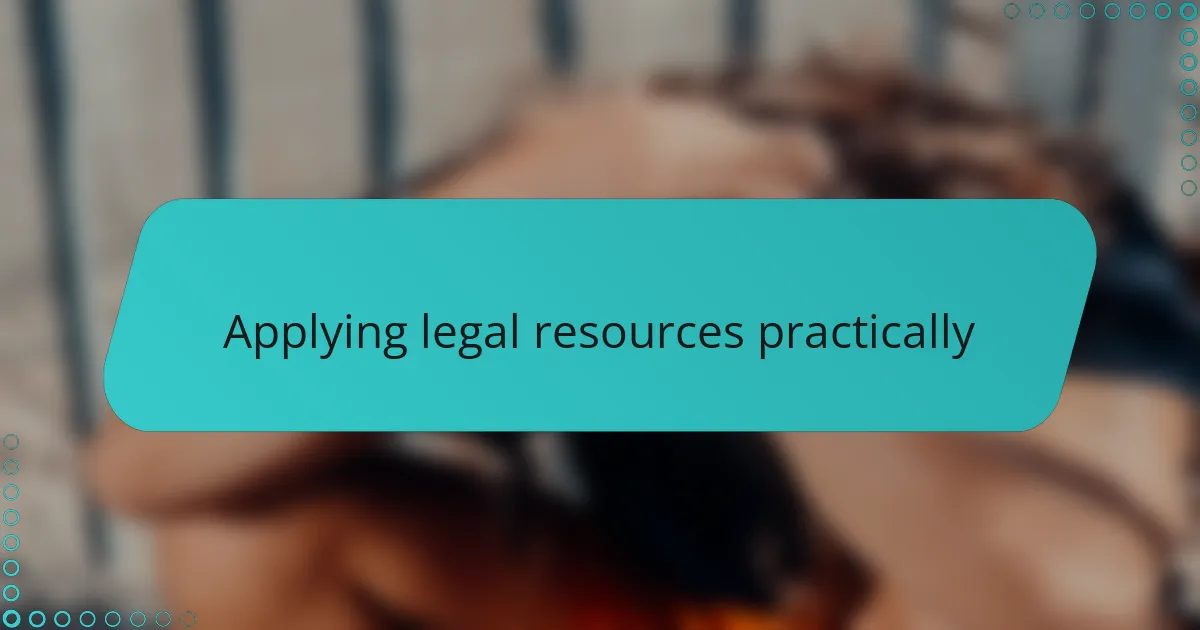
Applying legal resources practically
When it comes to applying legal resources practically, I’ve found that the real challenge lies in tailoring them to the specific needs of each case. Have you noticed how a one-size-fits-all approach rarely works in legal matters? For example, I once helped someone navigate housing issues by combining resources from tenant rights organizations with hands-on advice from a local advocacy group—it wasn’t just about knowing the law, but about connecting the dots in a way that made sense for their situation.
Sometimes, putting legal resources into action feels like solving a puzzle. I remember feeling stuck until I started mapping out every available tool: workshops to build understanding, templates for legal documents, and community contacts who could offer support. Each piece played a part, and seeing them fit together was encouraging—it’s proof that practical application happens step by step, not all at once.
I often ask myself, how can I make these resources less abstract for those I assist? Sharing stories of others who have successfully used the same tools helps bring the information to life and boosts confidence. When people see how others overcame similar hurdles, the resources become more than just information—they become a pathway to real change.
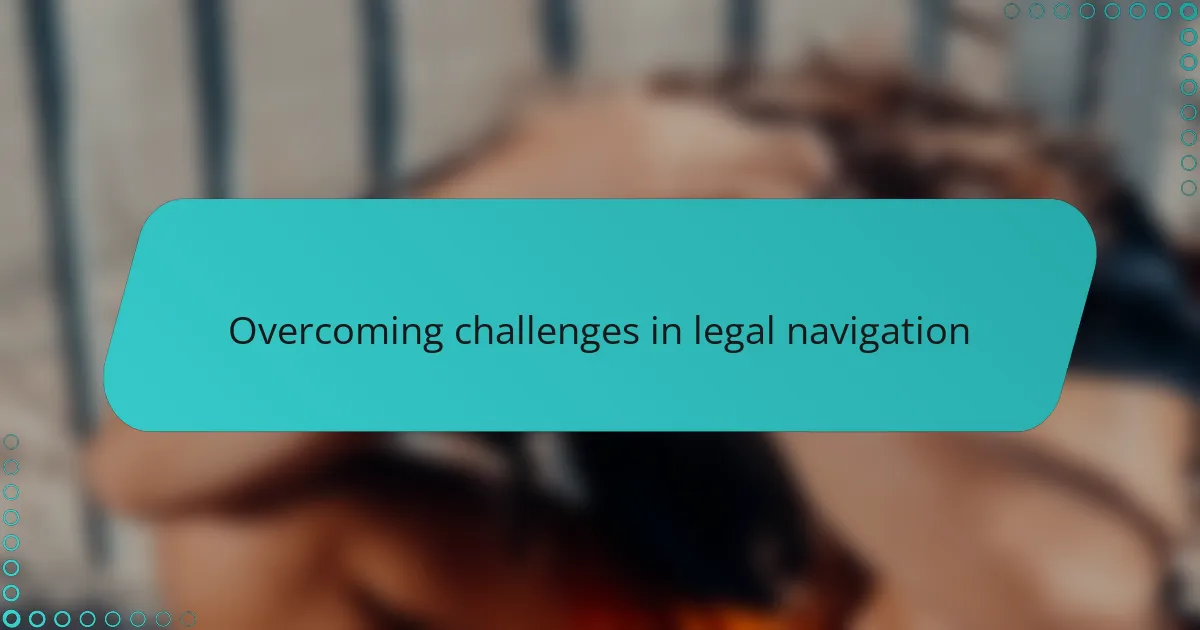
Overcoming challenges in legal navigation
Navigating legal challenges often feels like trying to find your footing in quicksand. I remember a time when the sheer complexity left me frustrated and uncertain about my next step. Have you ever felt that way—overwhelmed by procedures and deadlines that seem designed to confuse? What helped me most was breaking things down into manageable pieces and reminding myself that persistence beats perfection.
Another tough hurdle is the emotional weight that legal struggles carry. I’ve seen firsthand how fear or mistrust can cloud judgment and stall progress. It made me realize that overcoming these feelings is as crucial as mastering legal knowledge. How do you rebuild confidence when the system feels stacked against you? For me, it was about creating a support network that offered both guidance and encouragement.
Finally, I’ve learned that flexibility is key. No single approach works every time, and adapting strategies based on what actually resonates with the people I help has been invaluable. Sometimes I have to step back and ask, “Is there a simpler way to explain this?” or “Can I connect this person with a resource they might not know about?” Facing challenges is inevitable, but approaching them with creativity and empathy transforms obstacles into opportunities.
